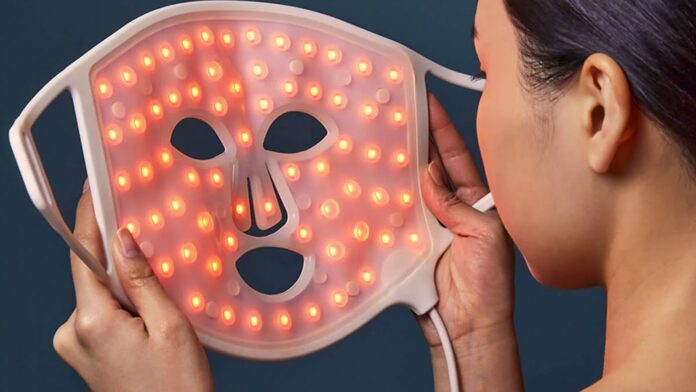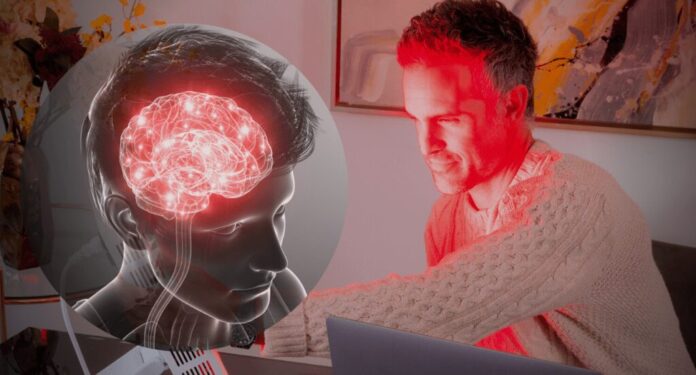Red light therapy (RLT) is a non-invasive treatment that uses specific wavelengths of red and near-infrared light to promote various health benefits.
Increasingly popular in both wellness and medical fields, RLT is praised for its effectiveness in skin rejuvenation, pain relief, and overall cellular health.
This therapy is becoming a staple in many wellness routines, reflecting its growing acceptance and utilization.
Showing the Ropes

Red light therapy involves the application of red and near-infrared light to the skin. The therapy works by penetrating the skin at specific wavelengths, typically between 600 to 900 nanometers, which are absorbed by the mitochondria in cells.
This absorption process enhances cellular function by increasing the production of adenosine triphosphate (ATP), the energy currency of cells. The key benefits of RLT include skin rejuvenation, pain relief, and improved cellular function.
By stimulating collagen production, RLT helps reduce wrinkles and fine lines, making it a popular anti-aging treatment. Additionally, RLT is known for its anti-inflammatory properties, making it effective in managing chronic pain and promoting healing at the cellular level.
Benefits of Red Light Therapy
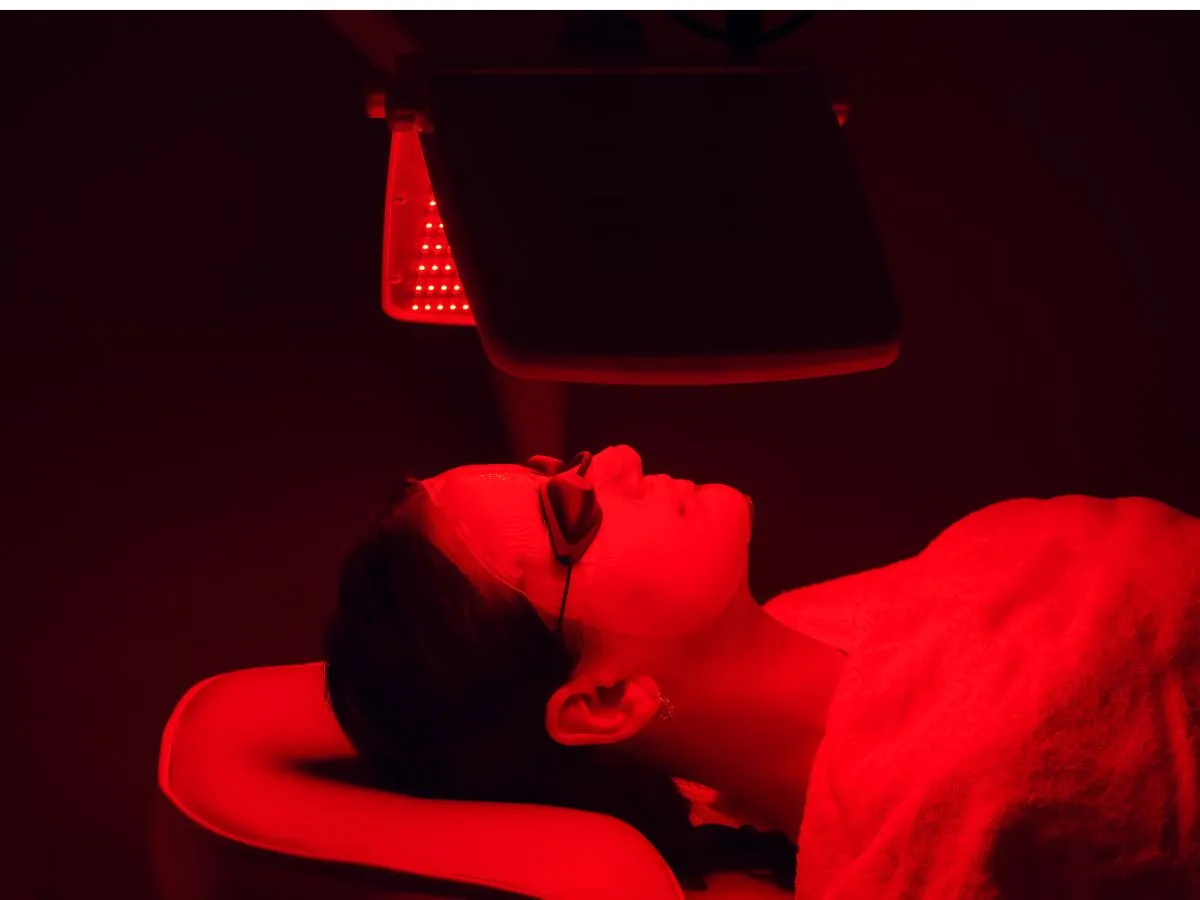
Now let us take a look at the benefits of this approach.
Skin Rejuvenation and Anti-Aging
Red light therapy stimulates collagen production, which is essential for maintaining skin elasticity and firmness. This process helps reduce the appearance of wrinkles, fine lines, and age spots, offering a non-invasive alternative to chemical peels and laser therapies.
Regular RLT sessions can significantly improve skin texture and tone, providing a youthful glow without the need for more aggressive treatments.
Pain Relief and Inflammation Reduction
RLT is effective in reducing inflammation and chronic pain conditions such as arthritis and fibromyalgia. The therapy promotes healing at the cellular level, which helps alleviate pain and accelerates recovery.
By reducing oxidative stress and enhancing blood flow, RLT supports the body’s natural healing processes, making it a valuable tool for managing chronic pain and inflammation.
Enhanced Muscle Recovery and Performance
Athletes and fitness enthusiasts benefit greatly from red light therapy, as it increases blood flow and reduces oxidative stress, enhancing muscle recovery and performance.
By promoting cellular repair and reducing inflammation, RLT helps athletes recover faster from workouts and injuries. This makes it an essential part of training routines for those looking to optimize their physical performance and recovery.
Improved Sleep Quality
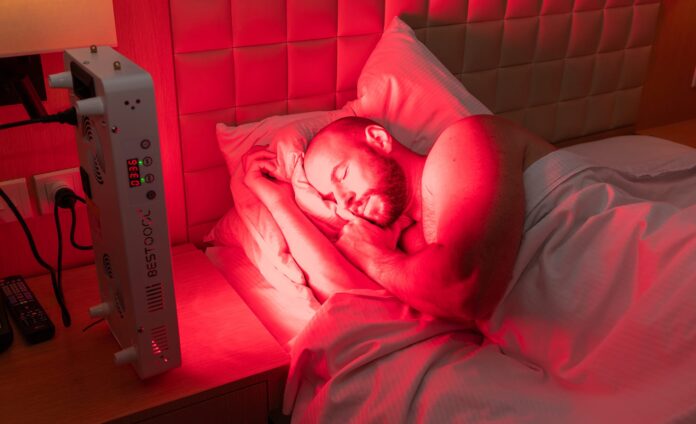
Red light therapy can help regulate melatonin production, which is crucial for maintaining a healthy sleep-wake cycle.
By promoting a natural circadian rhythm, RLT can alleviate insomnia and other sleep disorders.
Improved sleep quality has a cascading effect on overall health, contributing to better mental and physical well-being.
Mental Health Benefits
RLT has shown promise in alleviating symptoms of depression and anxiety by promoting the release of endorphins and regulating the circadian rhythm.
The therapy’s ability to enhance cellular function also supports brain health, contributing to improved mood and cognitive function. This makes RLT a valuable tool for those struggling with mental health issues.
Wound Healing and Tissue Repair
Red light therapy enhances cellular function and promotes the production of new cells, making it effective for wound healing and tissue repair.
The therapy is beneficial for treating surgical incisions, burns, and chronic ulcers, accelerating the healing process and reducing the risk of infection. This makes RLT a valuable addition to post-surgical care and chronic wound management.
Hair Growth Stimulation
RLT increases blood flow to the scalp and stimulates hair follicles, making it beneficial for those experiencing hair loss due to aging or conditions like alopecia.
Regular RLT sessions can improve hair density and thickness, offering a non-invasive solution to hair thinning and loss.
Boosted Immune Function
By enhancing cellular health and ATP production, red light therapy strengthens the immune response. A healthier immune system means better protection against illnesses and faster recovery from infections.
RLT supports overall wellness by ensuring that the body’s defense mechanisms are functioning optimally.
Convenience and Accessibility
Red light therapy is readily available in clinics, spas, and through home-use devices. Its non-invasive nature and ease of use make it simple to incorporate into daily routines.
The availability of affordable home-use devices has made RLT more accessible, allowing individuals to enjoy its benefits conveniently.
Market Trends and Growth

The red light therapy market was valued at $521.1 million in 2021 and is projected to reach $802.7 million by 2031.
North America and Europe currently dominate the market, reflecting high awareness and acceptance of RLT in these regions.
The growing popularity of non-invasive treatments and the increasing availability of RLT devices are key factors driving this market growth.
Growth Drivers
Several factors contribute to the rising demand for red light therapy. The increasing awareness of its numerous benefits, advancements in home-use devices, and the desire for non-invasive treatment options are major growth drivers.
As more people seek natural and effective wellness solutions, RLT continues to gain traction as a preferred choice for various health concerns.
Challenges and Considerations
Despite its many benefits, red light therapy faces certain challenges. Limited scientific data supports some claimed benefits, highlighting the need for more independent research to validate these claims.
The importance of using FDA-cleared devices cannot be overstated, as the quality and safety of RLT devices can vary. Additionally, individual results may vary, and not everyone may experience the same level of benefit from the therapy.
Future Applications
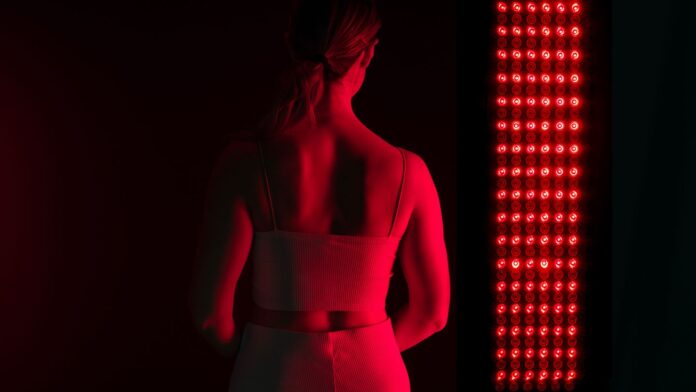
The future of red light therapy looks promising, with continued research exploring new therapeutic applications. As more studies confirm its efficacy, RLT could potentially be used to treat a wider range of conditions, from neurological disorders to metabolic diseases.
The expansion of consumer markets, driven by increasing awareness and technological advancements, suggests a bright future for RLT in the wellness industry.
Summary
Red light therapy is gaining popularity due to its numerous health benefits and non-invasive nature. As more people incorporate RLT into their wellness routines, its acceptance and utilization are expected to grow. With ongoing research and technological advancements, the future of RLT in the wellness industry looks promising.
